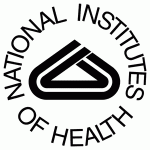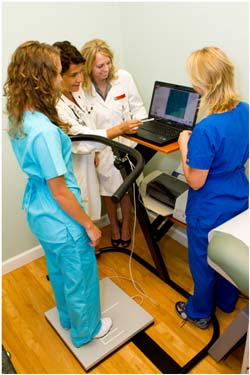
Michigan Brain & Spine Surgery Center wishes everyone a safe and happy 4th of July.
Brain & Spine Surgery

Michigan Brain & Spine Surgery Center wishes everyone a safe and happy 4th of July.

While the number of spine surgeons certified to perform robot spine surgery is still small, the ranks of robotics-certified physicians are growing.
Dr Zamorano , named as one of the 49 surgeons in the USA performing robotic spine surgery.
Dr. Zamorano is a neurosurgeon and orthopedic surgeon at the Michigan Brain and Spine Surgery Center at various locations in Michigan. Dr. Zamorano is certified to perform robot-assisted minimally invasive spine surgery. She completed a neurosurgery fellowship at Henry Ford Hospital in Detroit and serves as a clinical professor at Oakland University and William Beaumont School of Medicine in Royal Oak, Mich. She holds several honors and awards for her research nationally and internationally.
Becker’s ASC Review features general business, legal and clinical guidance on topics including joint-ventures, development and expansion, and regulatory and compliance issues; as well as analysis and insight for specialties including bariatrics, orthopedics/spine, gastroenterology, neurosurgery, pain management, ophthalmology, ENT and anesthesiology. Each of the nine annual issues of the publication reaches a qualified audience of more than 25,000 key business decision-holders, including surgeons, medical directors, directors of surgery, ASC administrators and others involved in the rapidly growing field of outpatient surgery. Further, every ASC in the nation receives Becker’s ASC Review.
 In the past 30 years, there has been a small but significant increase in the incidence of advanced breast cancer in American women 25 to 39 years of age, according to a study published in the February 27 issue of JAMA.
In the past 30 years, there has been a small but significant increase in the incidence of advanced breast cancer in American women 25 to 39 years of age, according to a study published in the February 27 issue of JAMA.
During the same period, there was no increase in advanced disease in older women, according to the researchers, led by Rebecca H. Johnson, MD, from the Seattle Children’s Hospital and the University of Washington.
In the young women, the incidence of breast cancer with distant involvement at diagnosis increased from 1.53 per 100,000 women in 1976 to 2.90 per 100,000 women in 2009. This is an absolute difference of 1.37 per 100,000, and is an average compounded increase of 2.07% per year (P < .001) over a 34-year interval.
The findings come from an analysis of incidence trends from the National Cancer Institute Surveillance, Epidemiology, and End Results (SEER) database.
 A mutation found in about one in 200 Icelanders older than 85 raised the risk of developing Alzheimer’s disease threefold, researchers said.
A mutation found in about one in 200 Icelanders older than 85 raised the risk of developing Alzheimer’s disease threefold, researchers said.
The mutation, in an immunoregulatory gene known as TREM2, was more common in Alzheimer’s disease patients than in the general 85-and-older population in Iceland with an odds ratio of 2.91 (95% CI 2.09 to 4.09, P=3.42×10-10), reported Kari Stefansson, MD, PhD, of deCode Genetics in Reykjavik, Iceland, and colleagues.
Because of the gene’s function within the central nervous system, the mutation “may lead to an increased predisposition to Alzheimer’s disease through impaired containment of inflammatory processes,” the researchers wrote online in the New England Journal of Medicine.… [Continue Reading]
 Michigan Brain & Spine Physical Therapy And Rehabilitation
Michigan Brain & Spine Physical Therapy And Rehabilitation
http://www.ptandrehabilitation.com/
Balance Training & Vestibular Rehabilitation
The Michigan Brain and Spine Surgery Center is proud to introduce their Falltrak Vestibular Rehabilitation Program. Commonly referred to as “Balance Training,” the program is available for patients with various vestibular problems, including central and/or peripheral vestibular dysfunction, and paroxysmal vertigo.
Balance training is also available for patients with unsteady gait and history of falls. This program is especially beneficial for elderly patients who have balance problems and would like to prevent injuries from falling.
Dr. Lucia Zamorano and her staff treat a wide variety of patients with their Balance Training Program. Patients who consistently attend training sessions report a range of benefits, including increased focus and concentration, no longer requiring assistance to walk, and drastic decreases with balance problems and feelings of dizziness.
Patients who feel they may benefit from balance training should be screened with video nystagmography (VENG) to determine the cause of their balance problems/dizziness. If a patient is a candidate for the program, then he or she will be scheduled for weekly training sessions convenient to the patient’s schedule.
 Indications:
Indications:Vestibular rehabilitation is offered five days a week at the Troy clinic. The typical schedule for patients is two sessions per week, with each visit lasting approximately one hour. During the sessions, patients are guided through a series of balance exercises, requiring minimal physical exertion.
Find out more about Balance+Plus VNG System at http://www.balance-plus.com/bp-vng.html
 For the first time, researchers have been able to use positron emission tomography (PET) to visualize binding sites of caffeine(Drug information on caffeine) in the living human brain, making it possible to explore possible effects of caffeine consumption.
For the first time, researchers have been able to use positron emission tomography (PET) to visualize binding sites of caffeine(Drug information on caffeine) in the living human brain, making it possible to explore possible effects of caffeine consumption.Caffeine, a neuroactive agent, is one of the most commonly consumed psychoactive substances worldwide. Caffeine has also been found to have some protection against some neurodegenerative diseases. In the U.S., it is estimated that 80 percent of adults consume an average of 200 mg of caffeine daily, the equivalent of two 5-ounce cups of coffee or four sodas.
But until now, researchers have not been able to visualize or quantify the effect of caffeine on the brain. In vitro studies have shown that commonly consumed quantities of caffeine have led to high A1 adenosine(Drug information on adenosine) in the brain, David Elmenhorst, MD, lead author of a study published in the November issue of The Journal of Nuclear Medicine, said in a press release. The A1 adenosine receptor is the most abundant in the human brain. Researchers sought to measure the A1 adenosine receptor occupancy with in vivo imaging.… [Continue Reading]
Author: Brian James Daley, MD, MBA, FACS, FCCP, CNSC; Chief Editor: William A Schwer, MD
In performing noncardiac surgery on patients on anticoagulation, the major concern is when it is safe to perform surgery without increasing the risk of hemorrhage or increasing the risk of thromboembolism (eg, venous, arterial) after discontinuing treatment. In treating patients on long-term Coumadin perioperatively, consider the risks of hemorrhage or thromboembolism versus the benefit from the operation. When considering noncardiac surgery, these factors and the need to weigh the risk of hemorrhage against that of thromboembolism must analyzed on an individual patient basis. Certain procedures (eg, oncologic procedures, threats to limb or life) are easy analyses. More complex discussions must be had for such cases as hernia repair of other elective nonurgent operations. … [Continue Reading]
Video demonstrations of a common maneuver for managing benign paroxysmal positional vertigo (BPPV) are readily available on YouTube, and most are accurate depictions of the treatment, according to a new study.
The study, published in the July 24 issue of Neurology, shows that 64% of 33 videos had correct information on how to perform the Epley maneuver, with most of the other videos having only minor deviations from the accepted approach, said lead author Kevin A. Kerber, MD, assistant professor of neurology at the University of Michigan Health System in Ann Arbor.
A relatively common condition, BPPV is caused by freely moving particles called canaliths that are trapped in the semicircular canal of the inner ear. A main symptom of BPPV is transient, positionally triggered dizziness.… [Continue Reading]
Almost a decade has passed since The National Center for Health Statistics conducted a study that made Americans aware of the serious dangers that face people of all ages, especially those over 60 who are at risk of falling. In addition to being the number one cause of injury for anyone over the age of 18, it is the leading cause of emergency hospital visits for those over 25 (including broken hips among the elderly, whose bones weaken with age), and, of greatest concern, a contributing cause of death within one year for one out of three such patients.
With the subject of healthcare in the forefront of today’s news headlines, both politically and economically, this is an appropriate time to evaluate the progress that has been made in the treatment of an issue that affects millions of Americans, but most people do not recognize this as being a serious problem until it is too late. The following profile of a member of a noted medical group practice explains the problem, as well as describes a state-of-the-art technique that health professionals now have available to them to help their patients avoid the dangers of this common risk shared by so many.… [Continue Reading]
Patients with mild cognitive impairment (MCI) may be able to avoid developing dementia by drinking several cups of coffee a day, the results of a new study suggest.
The study showed that patients with MCI who have a plasma caffeine level of 1200 ng/mL avoided progression to dementia over the following 2 to 4 years.
These patients exhibited a plasma cytokine profile that was exactly the same as that of Alzheimer’s disease (AD) transgenic mice that were given caffeinated coffee and didn’t progress to dementia. It’s therefore very likely that it’s caffeine from coffee, and not from other sources, that affords the cognitive protection, said study senior author Gary W. Arendash, PhD, research scientist, Bay Pines Veterans Affairs Hospital, St. Petersburg, Florida.
The research also suggests that certain cytokine patterns could signal for impending conversion to dementia among those with MCI, said Dr. Arendash.… [Continue Reading]
| Phone: | (248) 723-2477 |
| Fax: | (248) 681-3209 or (248) 481-3913 |
| eFax: | (248) 671-0621 |